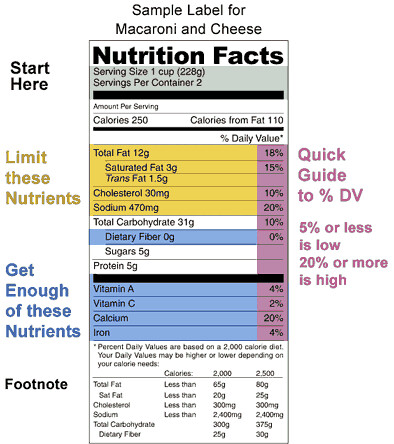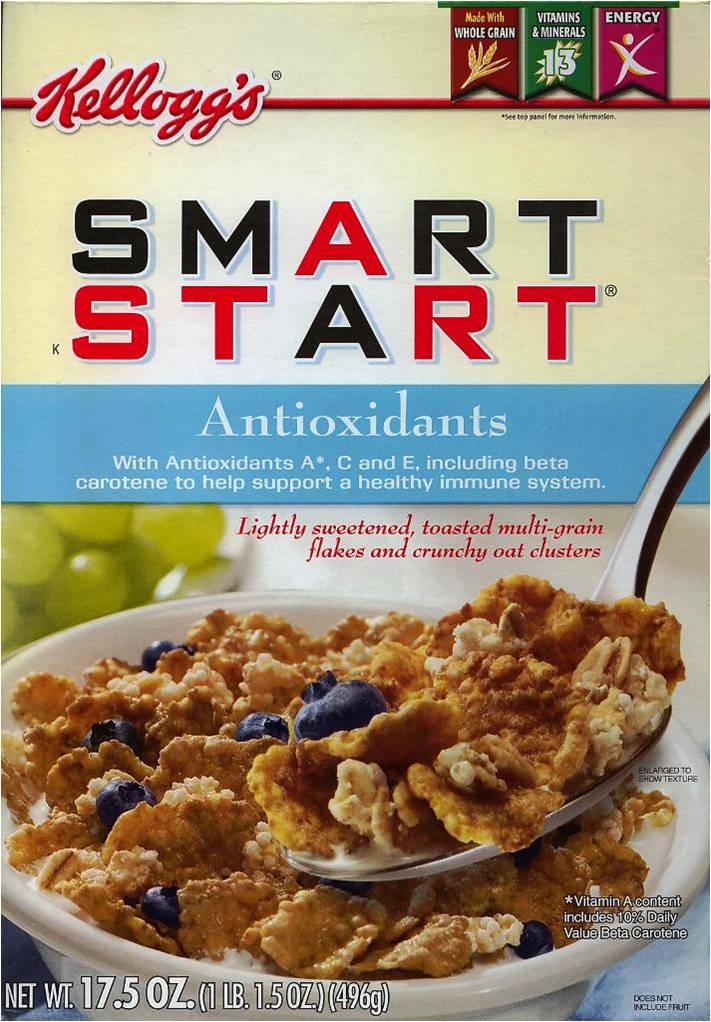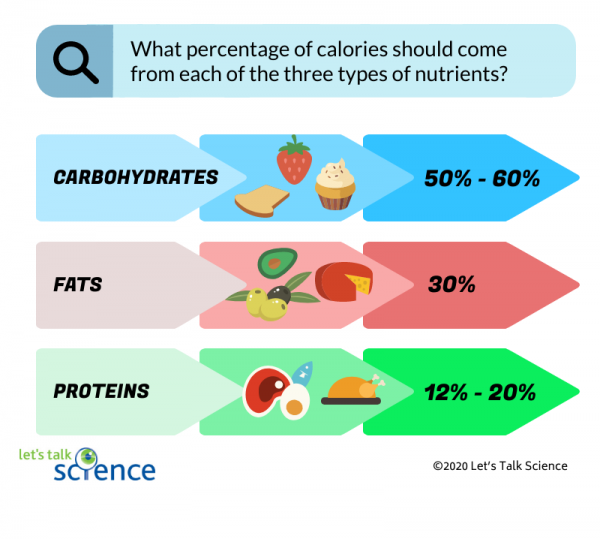44 lipids on food labels
Lipids - Nutrition Essentials - Maricopa 1) Triglycerides make up more than 95 percent of lipids in the diet and are commonly found in fried foods, butter, milk, cheese, and some meats. Naturally occurring triacylglycerols are found in many foods, including avocados, olives, corn, and nuts. We commonly call the triglycerides in our food "fats" and "oils." ANALYSIS OF LIPIDS - UMass Government regulations often demand that the amounts of saturated, unsaturated and polyunsaturated lipids, as well as the amount of cholesterol, be specified on food labels. Food Quality. Desirable physical characteristics of foods, such as appearance, flavor, mouthfeel and texture, depend on the type of lipids present.
Food Labels: Fat & Cholesterol | Home & Garden Information Center Food labels contain clues to a food's fat and cholesterol content, including the amount per serving. Compare similar foods and select the one with the smallest amounts of fat and cholesterol. Two important parts of a food label are the "Nutrition Facts" panel, which contains nutrition information, and the ingredients list.
Lipids on food labels
Food Labels -- Nutrition information and misinformation (Page 2 of 3) The exact statement of 21 CFR 101.9 (c) (2) is: (2) "Fat, total" or "Total fat": A statement of the number of grams of total fat in a serving defined as total lipid fatty acids and expressed as triglycerides. Amounts shall be expressed to the nearest 0.5 (1/2) gram increment below 5 grams and to the nearest gram increment above 5 grams. How To Read Food and Beverage Labels - National Institute on Aging At the top of the Nutrition Facts label, you will find the total number of servings in the container and the food or beverage's serving size. The serving size on the label is based on the amount of food that people may typically eat at one time and is not a recommendation of how much to eat. Read more about serving and portion sizes. Interpreting Total Fat and Types of Fat on Food Labels - Nina Cherie ... Now, at the end of the day, since all high-fat foods tend to drive up calorie counts, it's typically recommended that you limit your intake of total fat to 25-35% of your daily calories. Of this amount, saturated fats and trans fats should comprise less than 7-10% and no more than 1%, respectively. At the very least, following these ...
Lipids on food labels. How to Read Food Labels - AANMC Perhaps one of the most misleading parts of a food label is the serving size. Labels list the caloric and nutritional information based on one serving size, which may be a fraction of what is in the container, and frequently less than what the average person may consume. ... People on a low-fat diet or with elevated blood lipids may want to pay ... What types of lipids must be listed on food labels? - Answers A & C Vitamin must be listed on food labels. Companies can voluntarily list other vitamins that are present in the food on the labels as well. When vitamins are added to the food, or when a ... How to Read the Nutrition Facts Label on Packaged Foods - WebMD Most of it is in packaged foods and restaurant items. Limit salt to 2,300 milligrams (about 1 teaspoon) daily. If you have high blood pressure, kidney disease, or diabetes, or are African-American... Understanding Food Labels - Nutrition: Science and Everyday Application ... The FDA uses the following definitions for interpreting the %DV on food labels:4 5%DV or less means the food is low in a nutrient. 10% to 19%DV means the food is a "good source" of a nutrient. 20%DV or greater means the food is high in a nutrient.
Food energy - Wikipedia Many governments require food manufacturers to label the energy content of their products, to help consumers control their energy intake. To facilitate evaluation by consumers, food energy values (and other nutritional properties) in package labels or tables are often quoted for convenient amounts of the food, rather than per gram or kilogram; such as in "calories per serving" or "kcal per 100 ... Introduction to Lipids – Nutrition: Science and Everyday ... Figure 5.2 (left): A page from William Clark’s journal of 1805, describing his observations of the euchalon smelt, including its “delicate and luscious” taste.Figure 5.3 (right): Mural panel by Will S. Taylor, entitled “A Tsimshian Family Making Eulachon Butter,” circa 1825, with this description: “The glow of the ember fire is on the girls face as she waits for stones to heat. How to Find Lipids on Food Labels | Healthy Living How to Find Lipids on Food Labels by Sandi Busch Updated September 30, 2017 The nutrition facts panel describes the amount of total fat, or lipids, and the types of fats you'll get from one... 1.2.1. Learning From Food Labels - Concordia University To know this amount in grams of fat, read the footnote of the food label to find that the recommended maximum amount of fat grams to consume per day for a 2,000 kilocalories per day diet is 65 grams. Eighteen percent of sixty-five equals about 12 grams. This means that 53 grams of fat are remaining in your fat allowance.
The Science Behind Analyzing Fat in Food | Medallion Labs Feb 27, 2018 · Fats are primarily the triesters of fatty acids and glycerol and thus are commonly called triglycerides. Solid triglycerides are referred to as fat while liquid triglycerides are called oils. Lipids, on the other hand, include all the “fatty” materials—the substances dissolved in a fat-solubilizing solvent in a food. Reading & Interpreting Ingredient Lists on Food Labels 150 grams brown sugar. 50 grams egg. 215 grams flour. 10 grams baking powder. 4 grams cinnamon. 5 grams salt. 250 grams sweetened applesauce. This ingredient list seems pretty straight forward ... Learning To Read Labels :: Diabetes Education Online On a nutrition food label, subtract the fiber from the total carbohydrate amount. When you read food labels, the grams of sugar are already included in the total carbohydrate amount, so you do not need to count this sugar amount separately. The grams of sugar listed include both natural sugars, from fruit or milk, and added sugars. The Science Behind Calories and Nutrition Facts Labels Educational Resources: Find out how scientists figure out the information on food nutrition labels and why that information can help to keep you healthy. ... Health and Food & Nutrition related to lipids, proteins, carbohydrates and nutrition. Concepts introduced include nutrition labels, energy, calorie, kilocalorie (Kcal), metabolism, basal ...
PHSchool.com Retirement–Prentice Hall–Savvas Learning Company PHSchool.com was retired due to Adobe’s decision to stop supporting Flash in 2020. Please contact Savvas Learning Company for product support.
6 Foods High in Lipids and Why You Should Avoid - WebMD Lipids can be both solid or liquid at room temperature, in which case they are called fats or oils, respectively. For several decades, fats were considered bad for your health, and low-fat foods...
Reading Food Labels (for Parents) - Nemours KidsHealth Food labels must include the ingredients that are in the product, listed in order of how much of the ingredient the food contains. Food-makers are required to clearly state on food labels whether the product contains these common food allergens: peanuts, tree nuts, milk, egg, fish, shellfish, soy, and wheat.
Food labels and their effects on consumers - The Journalist's Resource In Chile, boxes of Trix have lost their cartoon rabbits and gained black warning labels as part of an effort to limit marketing of unhealthy foods to children. In other countries, packaged foods feature stoplight color coding to indicate their relative nutritional value.. The strategies are aimed at combating the ongoing obesity epidemic. According to data from the Organization for Economic ...
Current Analytical Techniques for Food Lipids - University of Nebraska ... Food lipids are broadly divided into categories of fats and oils based on origin of the lipid substance and its physical state at room temperature. Fats are animal-based solids, such as lard and tallow, which remain solid at room temperature due to their high concentration of saturated fatty acids
Food Labels Guide & Examples | How to Read Nutrition Labels - Video ... Food labels are read most easily from top to bottom and left to right. From top to bottom, food labels identify the following information: Servings per container and serving sizes. Calories per ...
5 Understanding Food Labels and Health Claims - Maricopa This label is called a Nutrition Facts panel, which gives information on the number of servings per container, the number of calories per serving, and certain nutrients. Specifically, it lists the macronutrients and four of the most important micronutrients people need to pay special attention to, such as Vitamin D, Calcium, Iron, and potassium.
Food Labels | Nutrition.gov What's New with the Nutrition Facts Label. HHS, Food and Drug Administration. The U.S. Food and Drug Administration (FDA) has updated the Nutrition Facts label on packaged foods and beverages with a fresh design that will make it easier for you to make informed food choices that contribute to lifelong healthy eating habits. What's in a Name?
Food Labels: Carbohydrates | Home & Garden Information Center The 2015 Dietary Guidelines for Americans makes the following recommendations about daily consumption of unrefined carbohydrate foods, based on a 2,000-calorie diet: Choose fiber-rich fruits, vegetables, and whole grains often. 6 ounces of grain products, with at least half of this amount being whole grain products 2 ½ cups vegetables
Food Labels | CDC - Centers for Disease Control and Prevention If you eat the whole thing, you are eating 8 times the amount of calories, carbs, fat, etc., shown on the label. Total Carbohydrate shows you types of carbs in the food, including sugar and fiber. Choose foods with more fiber, vitamins, and minerals. Choose foods with lower calories, saturated fat, sodium, and added sugars. Avoid trans fat.
Food Labeling & Nutrition | FDA Food labeling is required for most prepared foods, such as breads, cereals, canned and frozen foods, snacks, desserts, drinks, etc. Nutrition labeling for raw produce (fruits and vegetables) and...
How to Understand and Use the Nutrition Facts Label | FDA - U.S. Food ... You can use the label to support your personal dietary needs - look for foods that contain more of the nutrients you want to get more of and less of the nutrients you may want to limit. Nutrients...
Digestion and Absorption of Lipids – Nutrition: Science and ... Figure 5.22. Lipid digestion and absorption in the small intestine. Once inside the intestinal cell, short- and medium-chain fatty acids and glycerol can be directly absorbed into the bloodstream, but larger lipids such as long-chain fatty acids, monoglycerides, fat-soluble vitamins, and cholesterol need help with absorption and transport to the bloodstream.
Lipids and the Food Industry - Human Nutrition - University of Hawaiʻi Labeling laws allow foods containing trans fat to be labeled "trans-fat free" if there are fewer than 0.5 grams per serving. This makes it possible to eat too much trans fat when you think you're not eating any at all because it is labeled trans-fat free. Always review the label for trans fat per serving.
Should I check the cholesterol on nutrition labels? Major dietary cholesterol contributors — meat, fish, and chicken — often have no label. Having less than 4-6 oz of those per day and less than 2-4 eggs per week will generally keep your cholesterol reasonable. And that's a smart idea anyhow, to leave room for more artery-friendly fruits, veg, whole grains, beans, nuts, seeds, etc."
Interpreting Total Fat and Types of Fat on Food Labels - Nina Cherie ... Now, at the end of the day, since all high-fat foods tend to drive up calorie counts, it's typically recommended that you limit your intake of total fat to 25-35% of your daily calories. Of this amount, saturated fats and trans fats should comprise less than 7-10% and no more than 1%, respectively. At the very least, following these ...
How To Read Food and Beverage Labels - National Institute on Aging At the top of the Nutrition Facts label, you will find the total number of servings in the container and the food or beverage's serving size. The serving size on the label is based on the amount of food that people may typically eat at one time and is not a recommendation of how much to eat. Read more about serving and portion sizes.







![The Functions of Lipids in the Body – Human Nutrition [DEPRECATED]](https://pressbooks-dev.oer.hawaii.edu/humannutrition/wp-content/uploads/sites/10/2017/12/image4.jpg)




Post a Comment for "44 lipids on food labels"